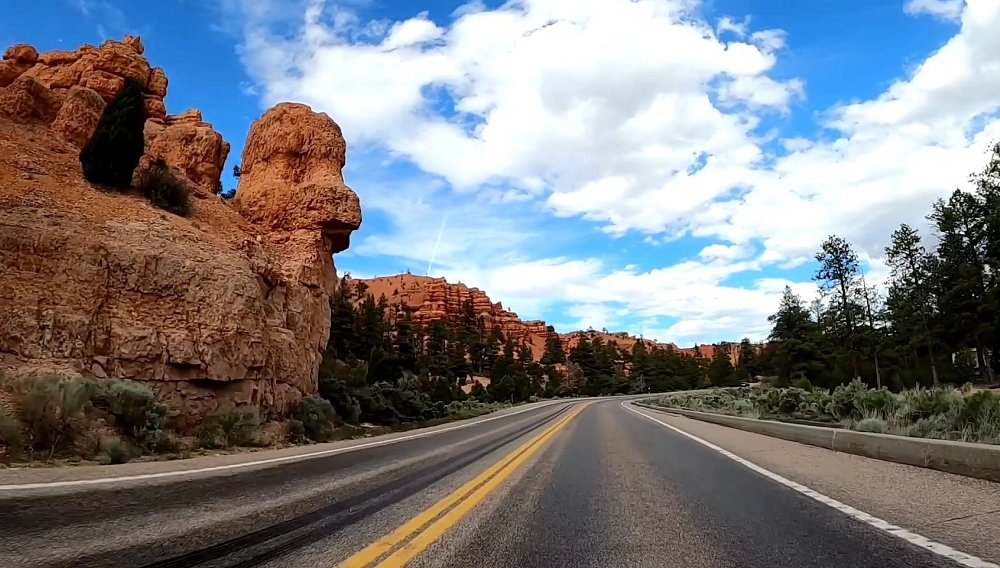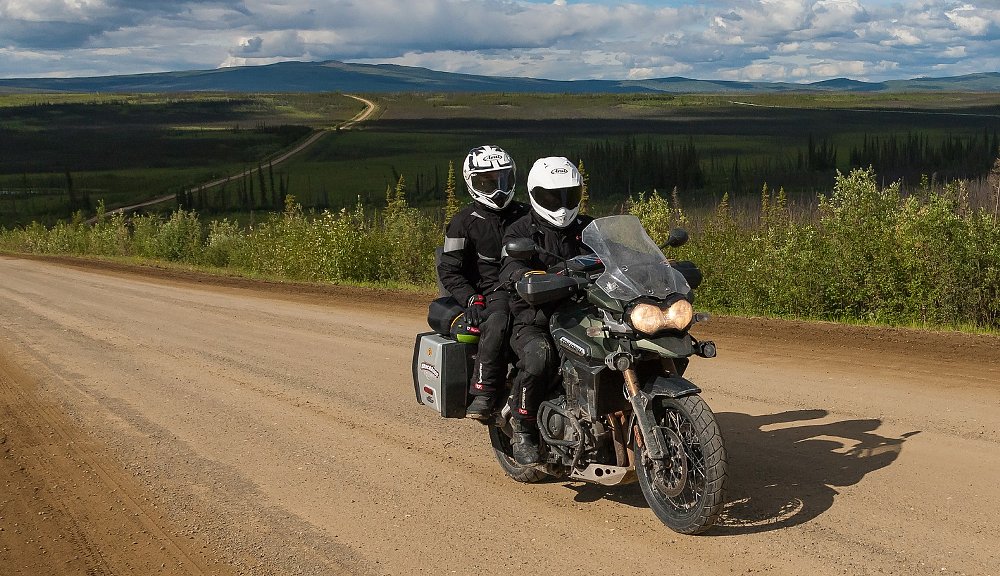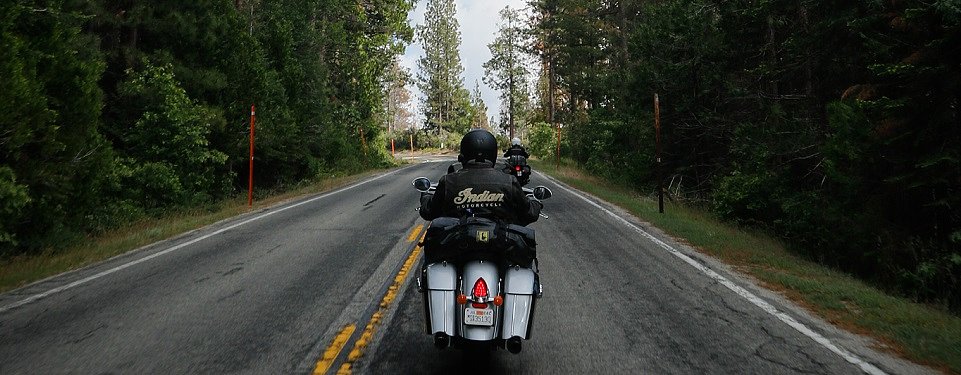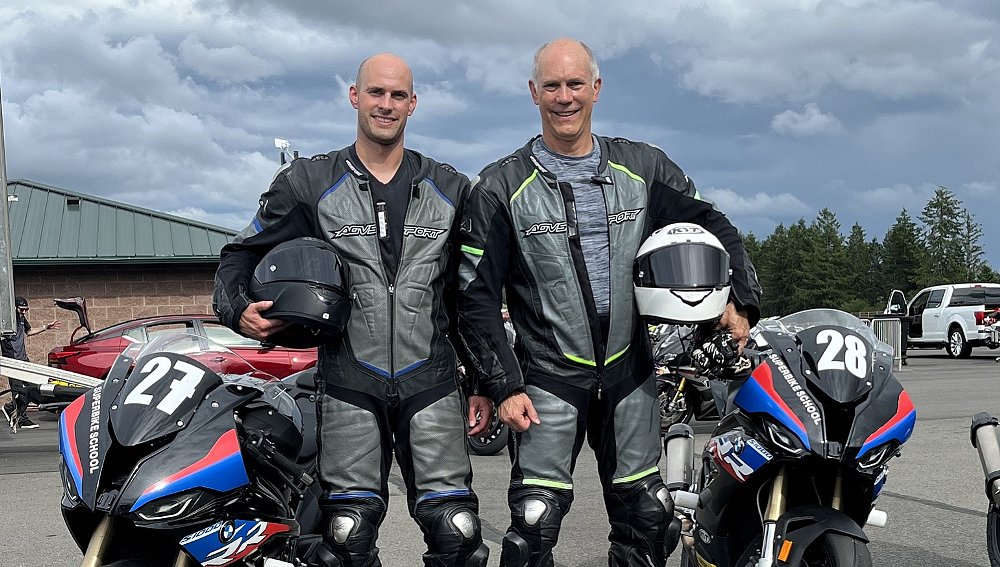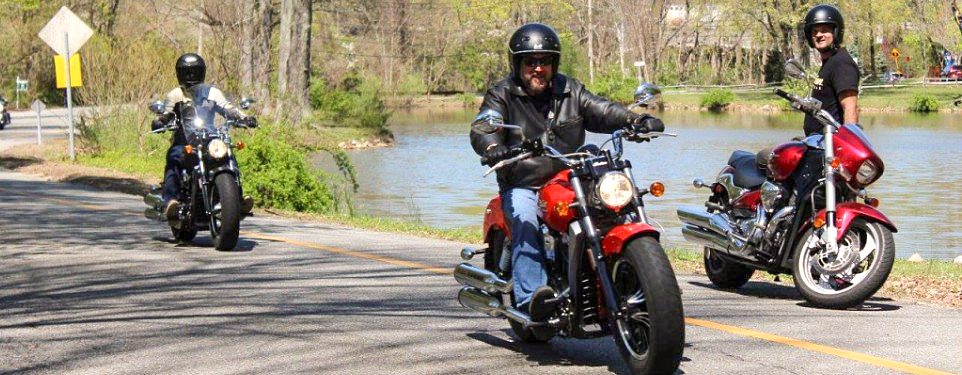Summer was ending, and Leo didn't want to fly from Boston back to the University of California San Diego. Instead, he had a plan: Look for a bike in New Hampshire that he could sell in California, less the price of the plane ticket.
He found a solid 2002 Honda VFR800 Interceptor at Nault’s Honda in Manchester: 24,000 miles, new tires, $3,999. It came with factory bags, heated grips, a Sargent seat, the VTEC V-four engine — a classic sport-tourer.
I decided to chase him on my 2021 Tiger 900 GT. He let me keep pace because I pay for hotels and gas, and because I am his dad.
He got the bike ready by popping on a Puig bubble screen, rigging up a phone charger, filling the tank, and pointing it toward Vermont. The forecast called for rain. We were off.
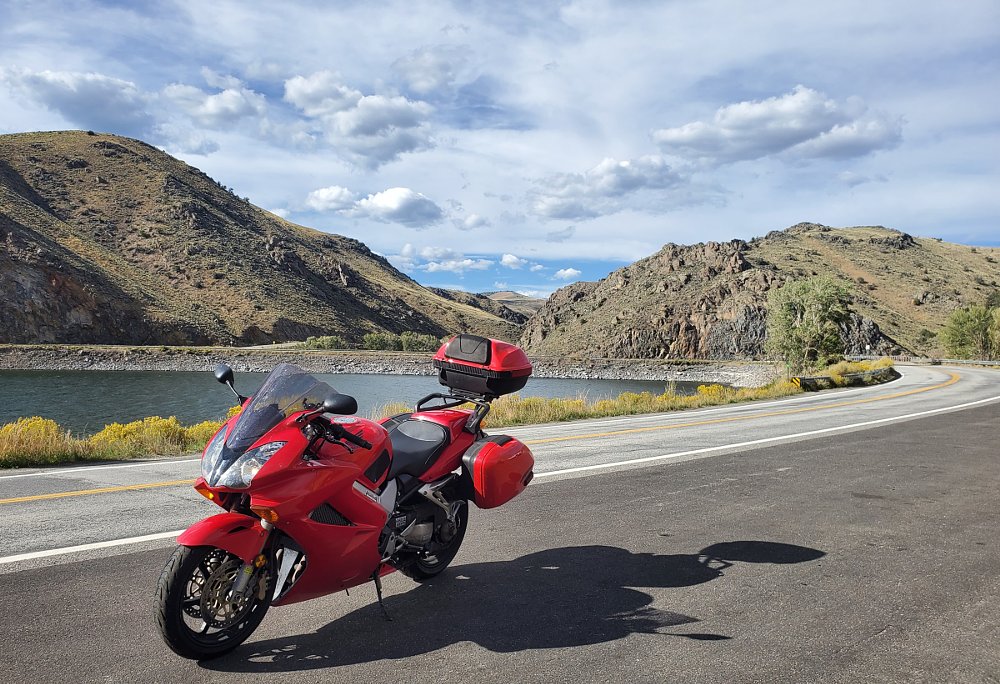
The accidental trans-continental motorcycle comparo
It was a father-son motorcycle trip, it was Leo getting back to college — and along the way it became a study in the merits of a classic sport-tourer versus an adventure-tourer in crossing big distances.
Both bikes carry plenty of stuff. Besides our riding gear and Leo’s entire college life, we brought tools, chain lube, snacks, water, everything. The VFR has hard bags, my Tiger has soft bags. In practice, it doesn’t matter. Leo likes unlatching a side case and carrying it into a motel while I fiddle with bungee cords, but even a full-size bagger has nothing on my Tiger. It’s set up with 150 liters of storage (more than a Gold Wing), but when empty, the soft bags roll down to nothing.
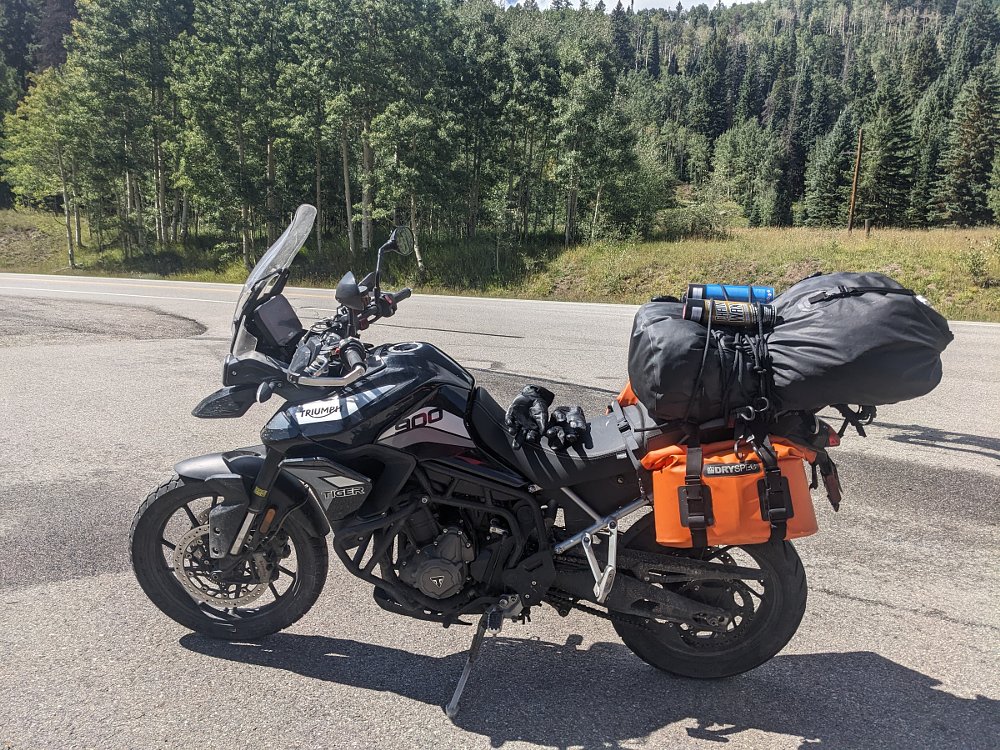
Our first big test was going to be the Molly Stark Trail Scenic Byway (Vermont Route 9). It rained. A lot.
When the clouds broke, we caught some super-narrow rollercoaster county roads in upstate New York. These have names like Pine Valley Road, diving and swooping through forests and farms. There, the Tiger is composed, in an “I do this for a living” way. The VFR is connected, intuitive, and engaged. It makes you feel like a hero. If you have a choice, take the VFR on anything that’s recently paved, and swap back to the Tiger later when you’re stuck with potholes or gravel.
Or, if you’re stuck in a parking lot at a Starbucks. Did I mention that the VFR has no steering lock? You can easily slam your thumb between the hand grip and the tank while trying to turn around. Leo and I took a pro riding course taught by retired state troopers — highly recommended — but I still can’t turn the VFR inside of 30 feet. I can ease the Tiger through any weird little gap, hop curbs, do whatever. Leo does U-turns on the VFR by banking over and going for it. It’s scary to watch.
By the end of day three, we had a good assessment of long-distance comfort. No issues on the Tiger. On the VFR, we had expected the forward lean to wear down our wrists or shoulders. That didn’t happen, maybe because we kept swapping bikes. Instead, Leo was struggling with the seat. Well, OK, it is older than he is. We got a seat pad at a Cycle Gear in Indiana. That transformed his trip.
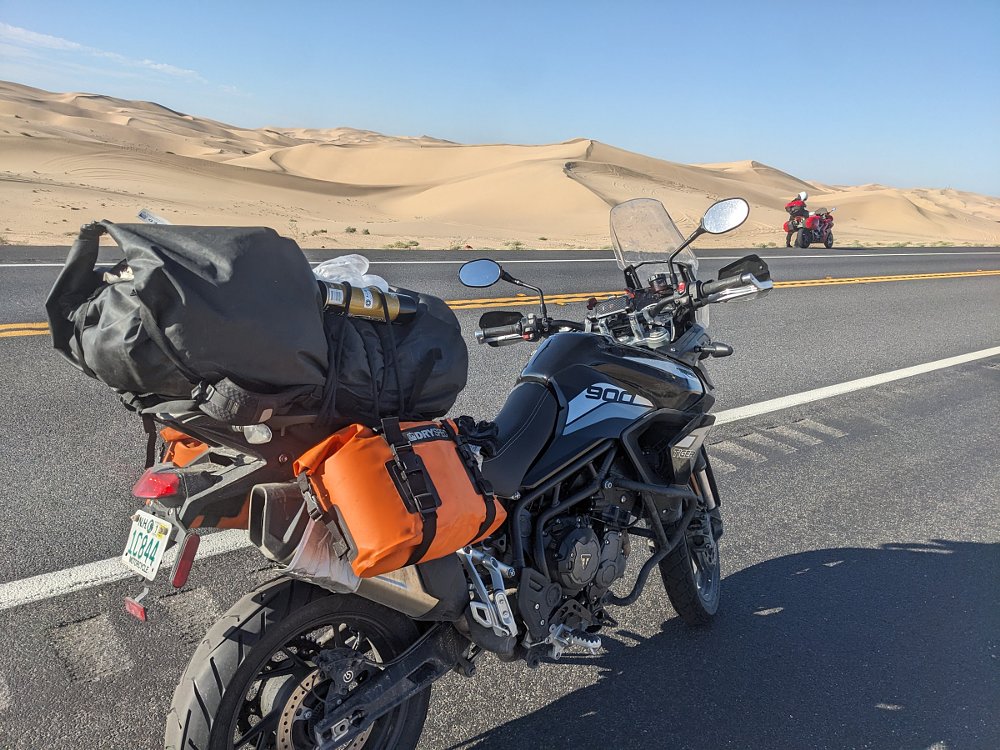
We were just getting over the shame of not knowing where to find the Mississippi River when I noticed that I had cooked my front tire. It wasn’t shot, but it had that riding-on-what’s-left feeling, and I didn’t want that in Colorado. A shop called Reno’s in Kansas City went way out of their way, same-day, to set me up with a pit stop for a Michelin Anakee. They let Leo adjust his chain in their parking lot. Not sure if we were in Missouri or Kansas.
Next, we found Kansas for real. It’s a beautiful place with great people. The roads go straight, and, respect, we both wanted Gold Wings for the next day and a half.
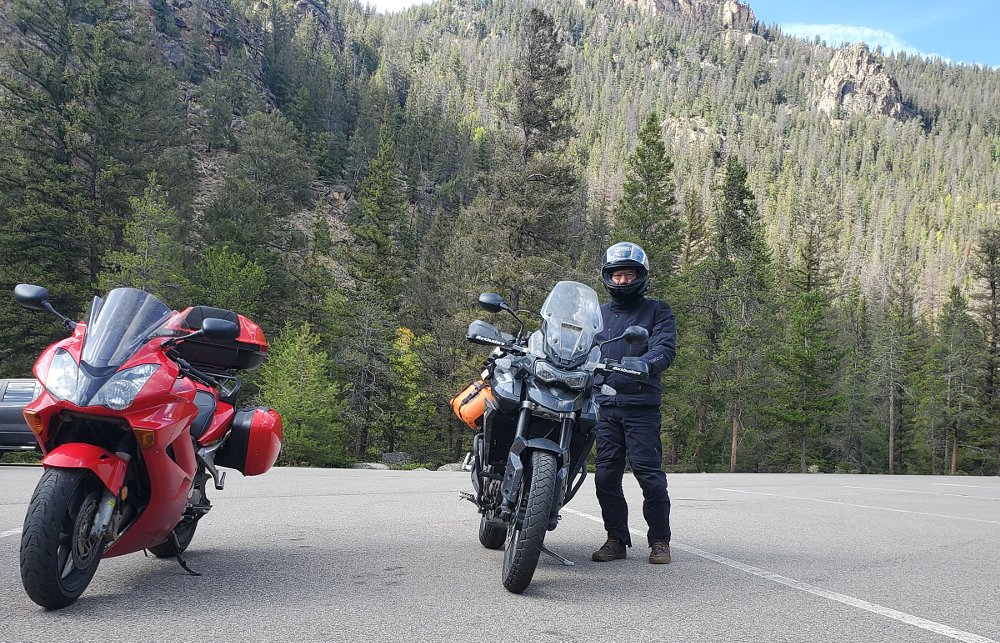
The high-altitude highlights
Finally: Colorado. We woke up in Denver, then set the bikes up in a Home Depot parking lot. You get a whole new level of understanding when you wrench on a bike. The Tiger is well engineered, well built, practical. I can adjust or lube everything with a handful of tools. I can set preload, damping, and the windscreen with no tools. It works.
The VFR is on another plane. The V-four and single-sided swingarm are works of art. The suspension doesn’t need tweaking because it’s perfect. It has a center stand that never gets in the way. It takes 15 minutes for chain wax to dry. Leo sets the eccentric chain tensioner in five — one bolt — then has nothing to do. Apart from traction control, things haven’t progressed much in 21 years, at least not in ways that matter. As of today, Honda does not offer a genuine sport-tourer, never mind a VFR.
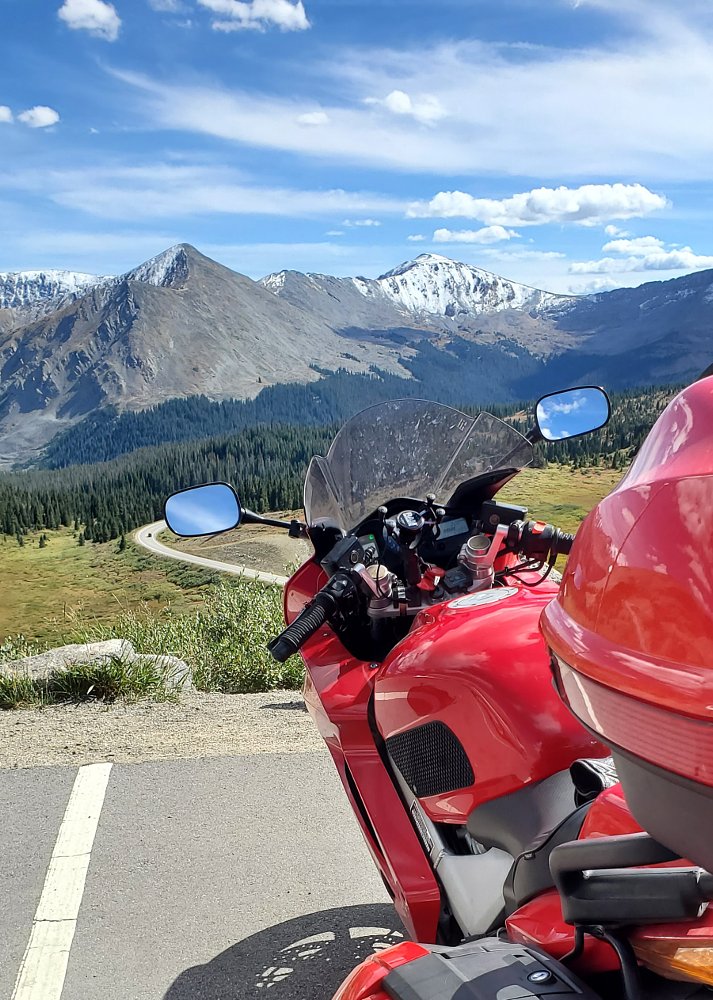
The Tiger is more work. It’s not slow, but you need to use leverage to bury the front end in a bend, then intentionally pick it up and flop it over the other way. It’s fun, but you are up on top of the bike, and when banking over, it’s a long way down.
The last word on sport riding came when we switched bikes. I took the VFR at my spirited but sane old-guy pace. After that segment, Leo asked if I had sped up. I hadn’t. He learned first-hand that it’s more difficult to hustle along an adventure bike than whistle past on something sportier.
We spent that night in Hotchkiss, pulling in alongside an 86-year-old named Bill. Bill was also riding with his son. They’ve been at it for 40 years. Bill arrived on his brand-new BMW R 1250 RT, temp tags and all, outfitted with a plastic jar stuck to the tank. I think it contained nicotine gum. He told us that his secret, apart from the gum, is his heated jacket. His advice: “Go to bars and get in with the locals, that’s when you hear the real stories.” Bill is my hero.
Next day, south of Ouray, we got caught in a downpour on the Million Dollar Highway at 11,000 feet. Total washout, 36 degrees, slick. Up, down, and around, the Tiger was absolutely sure-footed and secure. The new front tire worked wonders, and despite the miserable conditions, I rode through without feeling shaky. So did Leo — credit his riding skills, because the kid had the VFR in first gear for an hour. He says it didn’t feel squirrely, it just didn’t feel good. Freezing rain never does.
We stopped at a gas station in Silverton, elevation 9,318 feet. They offer oxygen. We got oatmeal cookies and tortilla chips. A guy had just come down from higher up the mountain, in snow, on his Yamaha Ténéré 700. He was sitting outside, propped up against the building. We gave him the rest of our chips.
We spent the night in the Navajo Nation, surrounded by European tourists who are strangely obsessed with old western movies. Beneath a thunderstorm, the Arizona desert is staggering. We stayed in the hills — Sedona, Jerome, Prescott — then took on the hot dry ride to San Diego. We arrived the back way, through Julian. I didn’t have the energy to run Banner Grade. Leo understood.
Cross-country test results
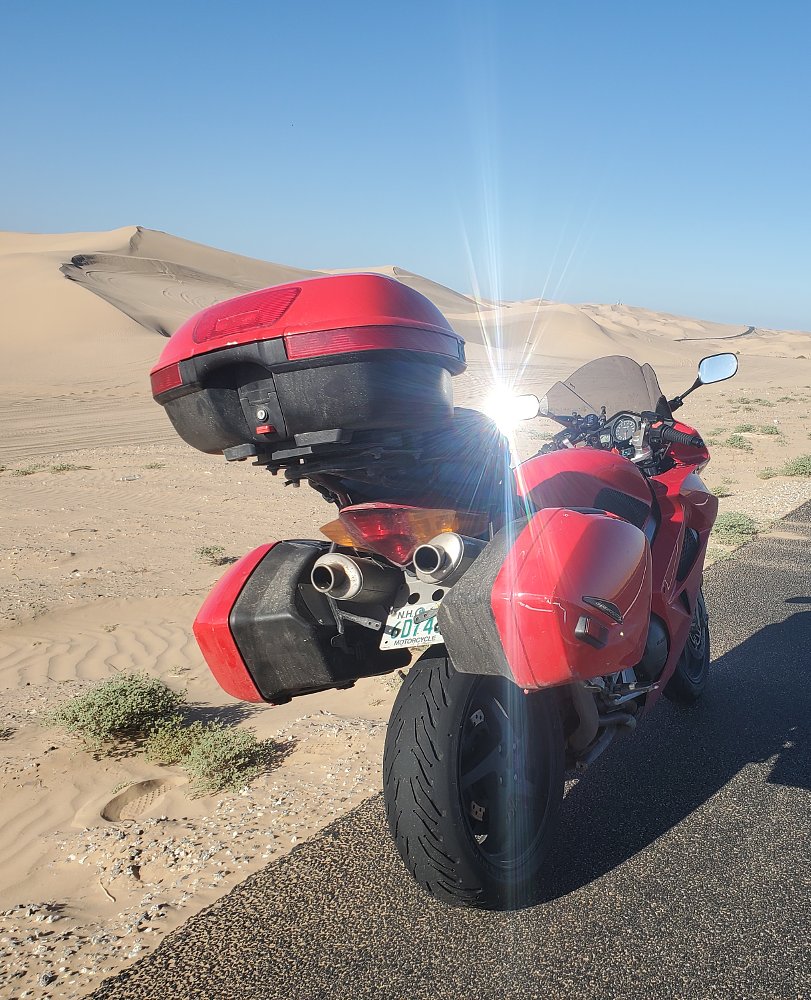
The Tiger is totally flexible. The wind protection is decent, it has an all-day riding position, and passing a tandem is just a roll-on away. On the interstate, you can listen to a podcast on your headset while slowly squaring off your back tire. The VFR aims itself at the next exit. We avoided interstates the whole way.
I wouldn’t trade my adventure bike. My usual rides are Vermont, Quebec, or Nova Scotia. Lots of state roads are unpaved, or sort of paved, and always full of surprises. I don’t ride it like a sport bike. I go exploring. After dropping Leo, I rode to Seattle by way of nowhere. The VFR would have been a handful on those tiny, off-camber, gravel-strewn roads. Also: There is no dry pavement on the Oregon coast. The Tiger doesn’t care.
On dry pavement, the Tiger can’t hold a candle to the VFR. Our ride taught us that there really is something to the lost art of sport-touring. In San Diego, Leo hopped on a Suzuki GSX-S1000GT+. Big smile, new life’s goal.
I hope to chase him back across the country again some day. I can ride the VFR.












